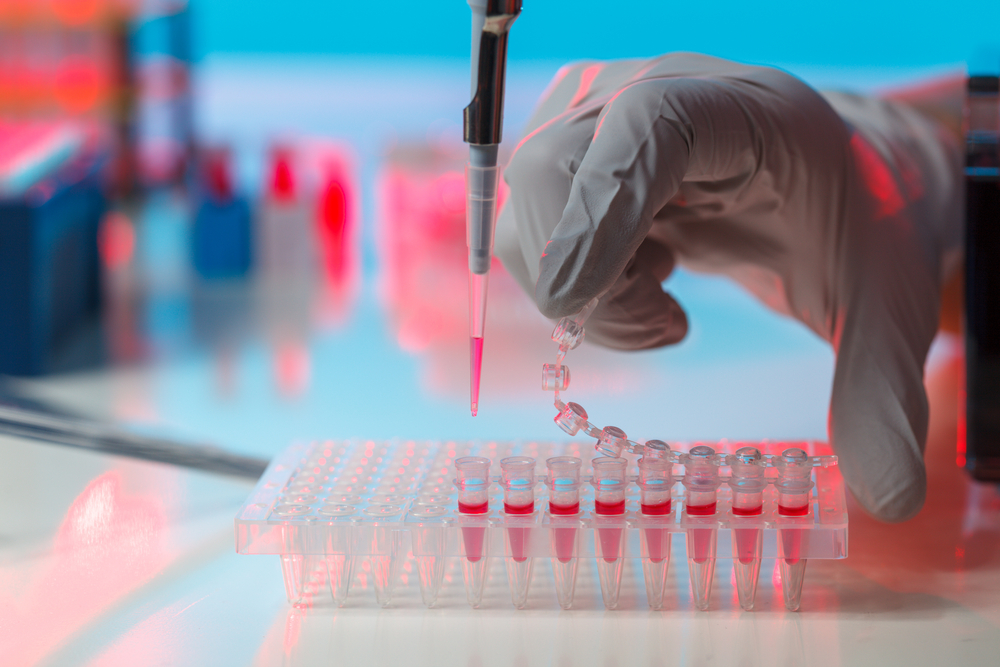SERPINA3 Nerve Injury-induced Protein May Be Biomarker of PPMS

People with primary progressive multiple sclerosis (PPMS) have significantly higher levels of a nerve injury-induced protein, called SERPINA3, in the cerebrospinal fluid (CSF) than do those with relapsing-remitting MS (RRMS) and those without the neurodegenerative disease, a study shows.
Of note, the CSF is the liquid that bathes the central nervous system (CNS), composed of the brain and spinal cord.
In addition, SERPINA3 CSF levels were associated with those of neurofilament light (NfL), a biomarker of neuronal damage — but only in people with PPMS.
These findings suggest that SERPINA3 may be used as a CSF biomarker of progressive forms of MS, particularly PPMS. Still, larger studies are needed to confirm the protein’s usefulness as a potential biomarker, the researchers noted.
The study, “CSF SERPINA3 Levels Are Elevated in Patients With Progressive MS,” was published in the journal Neurology: Neuroimmunology & Neuroinflammation.
Currently approved MS therapies are highly effective at suppressing the predominantly inflammatory component of RRMS. But they remain “largely ineffective in patients with progressive forms of the disease in whom the neurodegenerative component dominates,” the researchers wrote.
As such, a better understanding of the underlying mechanisms of neurodegeneration and neuroregeneration in MS may help to identify new potential therapeutic targets. Neuroregeneration refers to the regrowth or repair of nervous tissues, cells, or cell products.
Further knowledge also may help scientists in developing effective therapies to halt MS disease progression and/or promote neuroprotection.
With this is mind, an international team of researchers set out to identify biomarkers of the progressive phases of MS and those with neuroregenerative potential.
The team first searched for potential biomarkers whose levels were increased in mouse CNS tissue during the progressive phases of experimental autoimmune encephalomyelitis (EAE) — a condition that mimics MS in humans. Their levels also should be raised during the maturation of mouse neural stem cells into nerve cells in the lab.
Of note, neural stem cells can give rise to all types of nervous system cells.
Two candidate biomarkers — Serpina3n and S100A4 — were identified during a combined analysis of genes and proteins that showed the greatest level differences between progressive EAE mice and healthy mice whose gene activity was increased.
Specifically, the reserachers analyzed 441 genes and 227 proteins showing the greatest differences between the EAE and healthy mice with the 1,705 genes whose activity was increased during mouse nerve cell maturation.
Serpina3n, the mouse version of SERPINA3 in humans, is a protein whose production is induced by inflammation and nerve injury. S100A4 is a calcium-binding protein that not only plays an important role in tumor progression, but also is present at higher-than-normal levels in damaged human and rodent brains.
Notably, previous studies have described both Serpina3n and S100A4 as secreted proteins by reactive astrocytes. Treatment with either molecule resulted in neuroprotective effects, and even lessened EAE severity in the case of Serpina3n, those studies showed.
Of note, astrocytes are the most abundant cells in the brain and the first responders to sites of injury, where they assume a reactive state.
Further analyses in the mouse model of MS showed that both proteins were mainly produced in neurons, and that Serpina3n levels were higher during the progressive stages of the disease, and not in inflammation-driven stages.
This suggested that Serpina3n may be a biomarker of disease progression that “is not significantly influenced by the inflammatory process,” the researchers wrote.
The team then analyzed the levels of SERPINA3 and S100A4 in the CSF of 65 untreated MS patients — 29 with RRMS, 20 with secondary progressive MS, and 16 with PPMS — and 30 people with non-inflammatory neurologic diseases, who served as a control group.
The results showed that MS patients had significantly higher levels of both biomarkers compared with the control group.
Notably, these group differences in SERPINA3 levels were mainly driven by patients with progressive forms of MS, particularly those with PPMS, whose SERPINA3 levels were significantly higher than those found in RRMS patients.
In addition, SERPINA3 levels in the CSF were significantly associated with those of NfL — a biomarker of neuronal damage — only in the PPMS group, supporting a link with disease progression.
In turn, no significant associations between S100A4 levels and any particular form of MS or NfL CSF levels were observed.
These findings point to SERPINA3 as “a biomarker associated with the progressive forms of MS, particularly PPMS,” and “with potential for neuroregeneration,” the researchers wrote.
Future studies including larger number of patients with relapsing and progressive forms of MS are needed to confirm these findings, the team noted.






